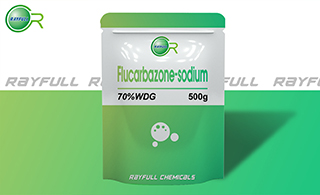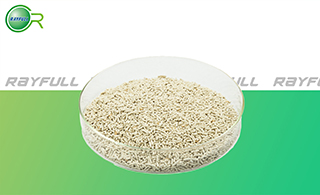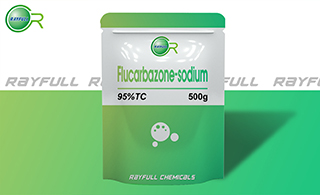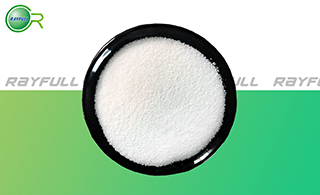Flucarbazone-sodium
   
Introduction: Flucarbazone-sodium is an organic sodium salt resulting from the formal reaction of the sulfonamide amino group of flucarbazone with 1 mol eq. of sodium hydride. An acetolactate synthase inhibitor, it is used as a herbicide to control grass weeds in cereal crops.
Common name: Flucarbazone-sodium
Another name: BAY-MKH 6562; FLUCARBAZONE-NA; MKH 6562; CHEBI:82010; UNII-76VQM4L12C; Flucarbazone-sodium [ISO:BSI]; SJO 0498; etc.
Chemical name: sodium 4,5-dihydro-3-methoxy-4-methyl-5-oxo-N-{[2-(trifluoro methoxy)phenyl]sulfonyl}-1H-1,2,4-triazole-1-carboximidate
Empirical formula: C12H10F3N4NaO6S
Structural formula:
Mol. Weight: 418.28 g/mol
CAS No.: 181274-17-9
Specifications
Leading Flucarbazone-sodium supplier
Flucarbazone-sodium 95% TC
Flucarbazone-sodium 96% TC
Flucarbazone-sodium 70% WDG
Flucarbazone-sodium 70% WP
Packing:
BULK PACKING
Powder: 25kg/Bag, 25kg/Drum, 50kg/Drum etc.
Liquid: 200L/Drum, 20L/Drum, 10L/Drum etc.
SMALL PACKING
Powder: 1kg/Alu bag, 500g/Alu bag, 200g/Alu bag, 100g/Alu bag, 50g/Alu bag, 15g/Alu bag etc.
Liquid: 5L/Drum, 1L/Bottle, 500ml/Bottle, 250ml/Bottle, 100ml/Bottle, 50ml/Bottle etc.
Customerized packing label
Flucarbazone-sodium FAO standard
Professional registration
HAZARDS IDENTIFICATION
Hazard statement(s)
H320: Causes eye irritation.
H332: Harmful if inhaled.
H402+H412: Harmful to aquatic life with long lasting effects.
Precautionary statement(s)
P102: Keep out of reach of children.
P260: Do not breathe dust/fume/gas/mist/vapours/spray.
P264: Wash thoroughly after handling.
P270: Do not eat, drink or smoke when using this product.
P271: Use only outdoors or in a well-ventilated area.
P273: Avoid release to the environment.
P280: Wear protective gloves/protective clothing/eye protection/face protection.
P304+P340: IF INHALED: Remove person to fresh air and keep comfortable for breathing.
P312: Call a POISON CENTER/doctor if you feel unwell.
P391: Collect spillage.
P403+P233: Store in a well ventilated place. Keep container tightly closed.
P405: Store locked-up.
P501: Dispose of contents/container to an approved waste disposal plant.
Supplemental Hazard Statements: none.
MAMMALIAN TOXICOLOGY
Acute toxicity: 1) Acute oral LD50 for rats is >5000 mg/kg. 2) Acute dermal LD50 for rats is >5000 mg/kg. 3) Acute inhalation toxicity LC50 (4 h) for rats is >5.13 mg/L. 4) Skin irritation: Non-irritating to skin (rabbits). 5) Eye irritation: Slightly irritating to eyes (rabbits). 6) Skin sensitization for guinea pig: Not sensitising.
NOEL: (2 y) for rats 125, mice 1000 mg/kg diet; (1 y) for female dogs 200, male dogs 1000 mg/kg diet. Other No evidence for any neurotoxic, genotoxic, teratogenic or carcinogenic potential.
ADI 0.04 mg/kg b.w.
Classification:
WHO Classification: U (Unlikely to present an acute hazard)
EC Risk Classification: Xi - Irritant: R36
ECOTOXICOLOGY
Effect on birds: Acute oral LD50 for Bobwhite quail is >2000 mg/kg. Effect on fish: Acute LC50 (96 h) for Rainbow trout is 96.7 mg/l. Effects on aquatic invertebrates: Acute EC50 (48 h) for Daphnia magna is 109 mg/l. Effects on algae: Acute 72 hour EC50 for Pseudokirchneriella subcapitata is 6.4 mg/l. Effects on bees: acute 48 hour LD50 is > 200 μg/bee. Effects on earthworms: Acute 14 day LC50 is 1000 mg/kg.
ENVIRONMENTAL FATE
Animals Almost completely excreted via faeces and urine within 48 h of oral administration to rats. Plants Extensively metabolised in wheat plants. The relevant residues for enforcement purposes are the parent compound and the N-desmethyl metabolite. Soil/Environment Average soil DT50 17 d. Photolytic DT50 in soil and water >500 d. Not mobile in soil; in dissipation studies, no product residues detected below 30 cm.
Usage: Flucarbazone-sodium was introduced by Bayer. It is a herbicide used for selective post-emergence control for grass weeds and some broad-leaved weeds on cereals.
Application: Biochemistry Branched chain amino acid synthesis (ALS or AHAS) inhibitor. Acts by inhibiting biosynthesis of the essential amino acids valine and isoleucine, hence stopping cell division and plant growth. Mode of action Absorbed through foliage and roots, and translocated acropetally and basipetally. Uses For post-emergence control of grass weeds, especially Avena fatua and Setaria viridis, and some broad-leaved weeds, in wheat.
| 






